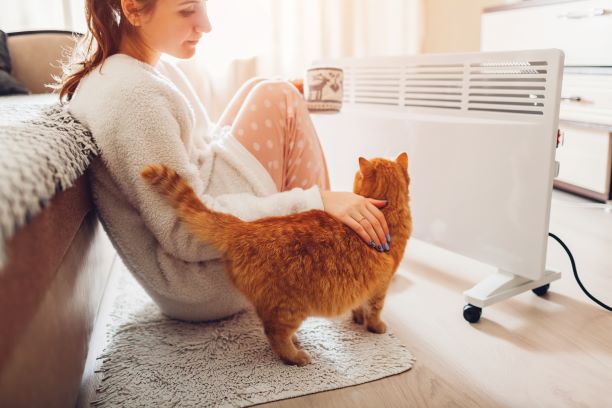Keeping Toasty on Those Cold Winter Nights
Home owners need to realise that it is great to close up the house on those cold days of the year and turn on the heating. However the moisture created by some devices needs to go somewhere. For this reason, all homes should have a good ventilation system as well. Please read the associated article on page 10 of this magazine.
Before you think about heating you need to make sure that your home is well insulated. There is no point heating a draughty home where 30% of the heat produced is lost through the floors, walls and ceiling.
When choosing the type of heating for your house you must decide what is the most efficient device for the rooms you want to heat. For example, most people would spend the majority of their time in the living room area. For this reason, it would be a good idea to spend more money on an energy efficient device that provides great output but lower running costs compared to other options. In the end no one wants an unexpected power bill. Some of the best forms of heating are energy efficient heat pumps, modern wood burners, pellet fires and flued gas heaters. Avoid using un-flued gas heaters as these put moisture into the air, which the first thing you need to get rid of.
If you want to add heating to the smaller rooms a small electric heater will be fine.
A wall panel heater with thermostat and timer could also be the way to go. Remember a warm home is vital for our health, well-being, and comfort.
We now live in an age of jargon like environmental impact, renewable energy, energy efficiency etc. The likes of heat pumps, wood burners and pellet fires are around 80% renewable on average. There are many websites out there which give information on the most efficient forms of heating to suit your requirements or preferences. They give you the pros and cons of each solution. As people build larger homes the heating requirements increase.
Insulation, heating, ventilation and tackling dampness work together as a system, with each facet one part of the solution. However, as the nights grow longer and temperatures fall, the trick is finding a balance between a cosy home and a power bill that won’t break the bank.
Follow this step-by-step guide below for a warmer home this winter:
Insulation is the first step to making your home comfortable this winter. An insulated home is easier and cheaper to keep warm as the insulation helps prevent heat dissipating faster than you can generate it.
By tackling dampness, you can reduce the growth of mould, mildew and dust mites. A drier home is healthier and needs less maintenance. An upside is the air is easier (and cheaper) to heat. Many of the steps for removing dampness are cheap and easy fixes.
Once you’ve dealt with the main sources of dampness, the next step is ventilation. While some old homes have too much ventilation, modern homes can be too airtight. Getting the balance right helps maintain good air quality while removing day-to-day moisture.
Heating keeps your home warm, dry and safe to live in. An insulated, well-ventilated home will still be cold without a source of heat. But be aware that your choice of heat source and fuel can ramp up your power bill during winter.
In summary, if the electrician is armed with the knowledge above then they will be able to offer the best heating solution to their client.

